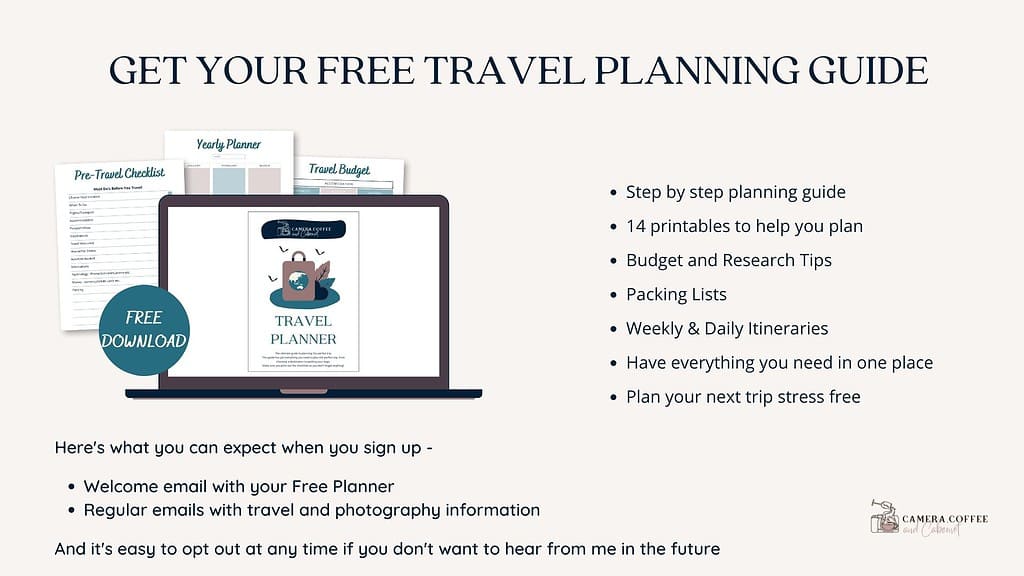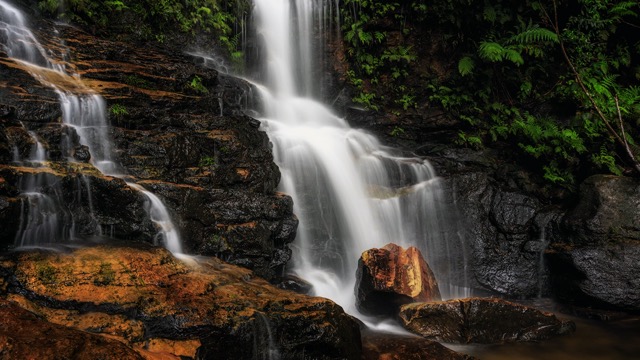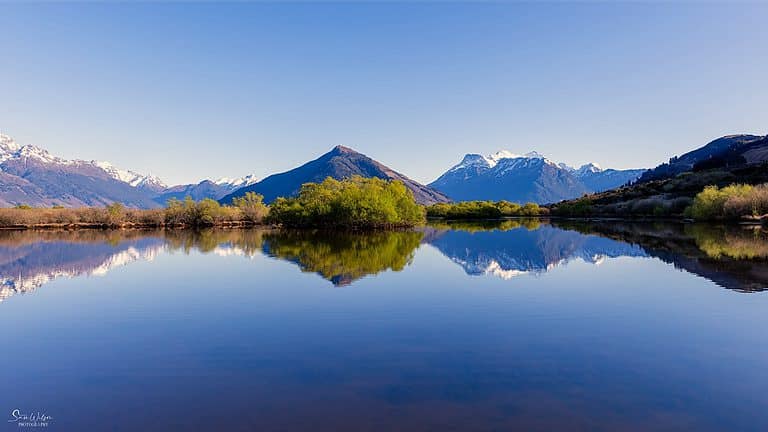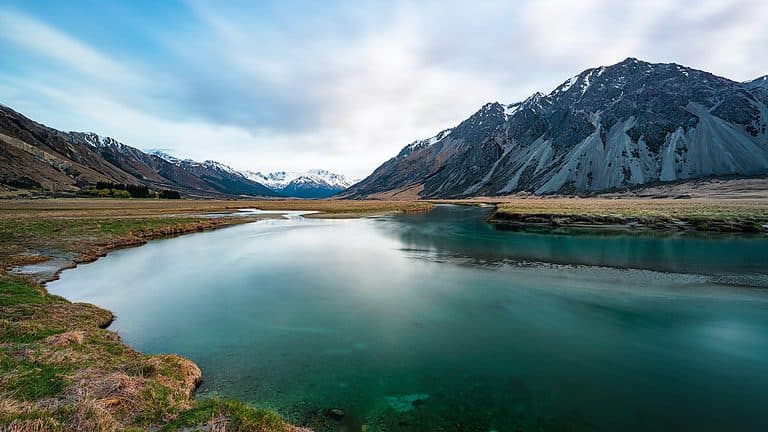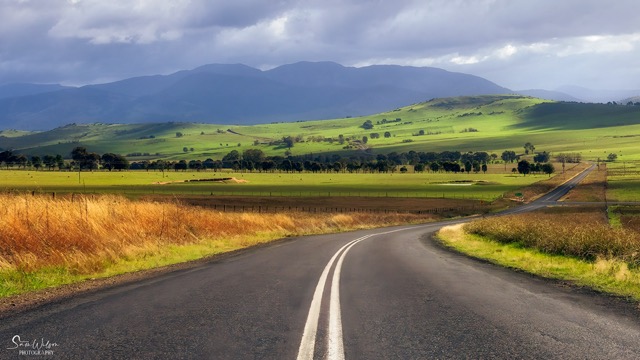Planning a Road Trip: 10 Steps To A Successful Road Trip
Road trips are the ultimate way to travel. This is completely subjective of course, but it is honestly my favourite way to travel.
With the freedom to set your own rules, budget and itinerary, the possibilities are endless. If you’re itching to hit the road and need a little guidance on where to begin planning, you’ve come to the right spot!
Planning a road trip can be daunting, but it doesn’t have to be! This guide has everything you need. Pick your perfect destination, map out your itinerary, create your budget, get your vehicle road-ready, book where you’ll be sleeping, and get ready to hit the road.
Don’t let poor planning ruin your road trip, follow this guide for a stress-free journey.
Let’s go Roadtripping!
Make planning a road trip a breeze with this FREE travel planner filled with printable templates to cover all your planning needs.
1 – Pre-Planning Essentials
Before you start planning, there are a few questions to answer before you start planning your itinerary and packing your bags.
If you’re not travelling solo, make sure you get input from your companions as well – you definitely want to be on the same page before you head off on your adventures.
Before you can start your official planning, you need to have some ideas of when, with whom, and where you want to head off to.
TIP – This is when I create a document in Google Docs to save any and all information I find related to the road trip that I’m planning. This includes links to locations, accommodation, activities; anything really that I think is interesting and has potential.
It doesn’t have to be pretty, but it keeps everything in one location so you don’t have to try and find that wonderful spot you saw during your research… Now where did I see that again?
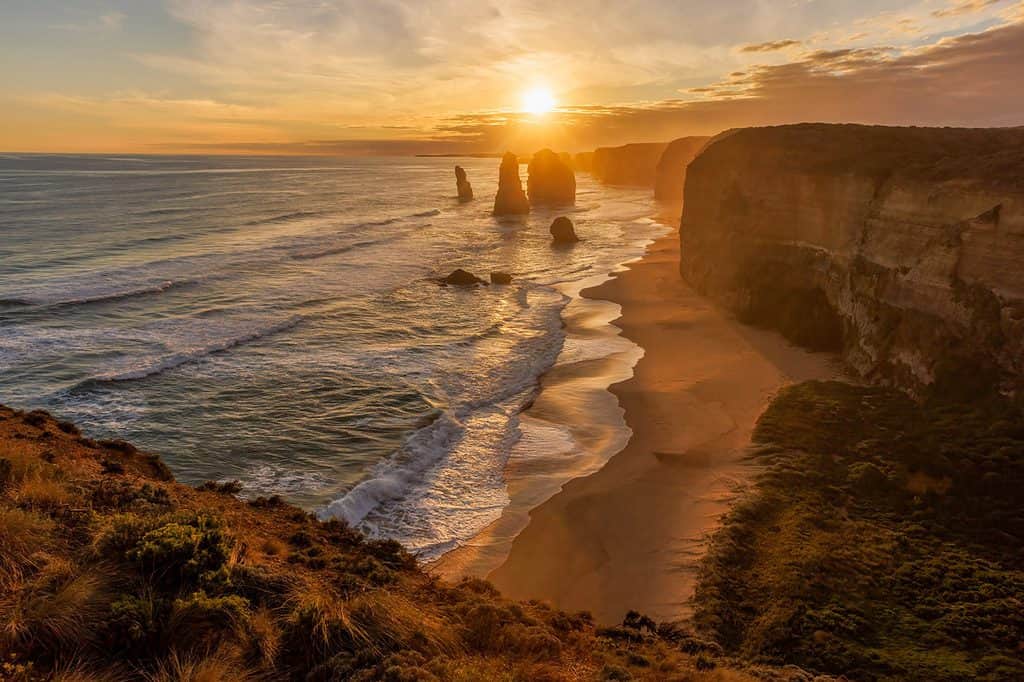
Where To Go
Once you have an overview of the region you want to cover, it’s time for everyone to create a list of places to see during your trip.
Make sure you do some thorough research here as you will be sure to find some hidden gems.
If you’re looking for some inspiration for this, great resources for finding these are good old Google Searches, Pinterest, Instagram and Trip Advisor.
When To Go
Once you’ve decided where you’re heading, you need to decide is the best time to go. This can be totally dependent on when you can get away, or it can depend on the activities you want to do at your location.
Other things to consider are the different activities available at different seasons such as snow skiing or chilling by the beach.
If budget is a consideration (or being too busy with other tourists), you may want to consider avoiding the busiest times. Off-season and shoulder can really help you save some cash.

Type Of Trip
Now it’s time to think about things such as who will be going, the length you have for your trip, and whether you will be using your own vehicle.
Maybe you will be flying to your initial destination, then hiring a vehicle?
How much time you have available will determine how far you travel, and how much you can reasonably fit into your schedule.
Will you be going solo, with a significant other; or with friends or family? If with others you will need to negotiate some ground rules such as budget expectations, and synchronising dates etc.
Once you’ve answered these questions you have the basis of your trip, so let’s get to the good stuff; mapping out your trip!
Make planning a road trip a breeze with this free travel planner filled with printable templates to cover all your planning needs.
2 – Map Out Your Itinerary
Now that you have your ideal destination and locations that you want to visit along the way, it’s time to map out your route.
Start by plotting the main destinations you’re hoping to get to and add them to a map. Google Maps is my go to for this, but feel free to use whichever app works for you.
It will likely look ridiculous when you first plot all your spots, so you will need to adjust them with them until you have a route that looks more organised.
Don’t despair if you have to delete spots you were originally hoping to see. Keep them saved on your document and see if you can get there on separate travel days.
At this point your map should just be a round trip of your starting and ending point.
“Well, we’re not in the middle of nowhere, but we can see it from here.”
~ Thelma and Louise (Movie)
Plot How Far You Will Drive Each Day
You will then need to drill down and plot how far it is from A to B each day. Plan when you need to stay in a place for more than a night or two. This will depend on the activities you want to do and locations you want to spend time at.
Check the distances and estimated time travel for your driving days. It may be possible to drive 800 km in a day, but it may not be safe, and you need to allow for stops on the way.
I recommend not driving any more than around 500 km or between 5 and 6 hours in a day. The type of roads will also determine this. Driving on smaller country roads is very different, and much more enjoyable, than sticking to the highways.

TIP – Check your route can be driven with your vehicle type. If you’re planning on going more remote, come roads could require a four-wheel-drive. Some roads are also closed at certain times of the year.
Set The Length Of Your Road Trip
In a perfect world there would be no limit to your time, but the reality is it’s likely you will have a set timeframe for your trip.
I’m sure you will have more things to see on your list than you will have time for. In this case you will need to prioritise. The way I do this is to create a list of ‘must’ and one for ‘optional’.
Plan How Long You Will Stay At Each Location
It is always best to plan for more time than initially thought, as I have experienced that a trip estimated to be five hours by Google Maps can often take up to eight hours. This allows for unplanned stops, photo opportunities, and meal breaks.
Also consider whether you’re comfortable driving in the dark. This can be particularly important if you are travelling solo. My personal preference is to arrive at the destination during daylight hours. It’s no fun trying to find your accommodation in the dark.
Setting the pace that works for you is a huge part of a trip’s success. I generally like two nights in a destination. Arriving in the afternoon gives you time to settle in, stock up on supplies etc. You’ve then got a full day to explore before heading off again. If you try to fit in too much, you may miss some key stops. You can also end up fatigued and not enjoying your trip. It’s all about finding a balance that works for you.

Schedule Some Downtime Into Your Itinerary
Plan for a day, or even an afternoon or lazy morning where you don’t schedule any activities. This will depend on the length of your trip. Taking some rest time will allow you to recharge and enjoy the experience.
Schedule these rest times after a particularly long drive, or after four or five days on the go. For a longer trip, consider planning at least one rest day each week.
If you find you don’t need it, you’ve got your ‘optional’ list so there’s no reason to be bored!
Now that you’ve planned your route, it’s time to create the budget for your trip … sigh.
You May Also Like: Get inspired and motivated for your road trip planning with this collection of funny and inspiring Road Trip Quotes.

3 – Create Your Budget
Road trips can be a budget-friendly way to travel, but it all depends on your style and how long you’re going for. My advice? Create a budget when planning a road trip to help manage your expenses.
Things to consider including in your budget:
Transport
You should have the estimated kilometres for your trip from mapping out your route above. From this you can estimate the cost of petrol for your trip.
A basic calculation: (kms planned x Litres/100km x Average Fuel Price)/100 = Estimated cost.
Example: (2000 km x 12 x $2.00)/100 = $480.00
Note: Here’s a guide to estimate your kilometres per litre of fuel. According to 2022 statistics an average passenger vehicle uses just over 11 Litres of fuel per 100 kilometres travelled.
It’s a good idea to be a bit conservative when estimating this so you don’t get caught out. Fuel prices can be volatile in general, but can also vary depending on the areas you are travelling to. The more remote, the more expensive in general.
This is where you also need to include your rental costs if you are planning on hiring a vehicle.
Do you need to book flights as well?

Accommodation
Where are you going to sleep each night?
I usually stay in a combination of motels and cabins on my road trips. Your travelling style will determine the type of accommodation that suits you.
Food and Activities
Will you be eating out every meal, packing lunches, don’t forget snacks and coffee.
It does cost more to eat when you’re away, but there are ways to minimise this. I tend to set an average cost per day; buy water and snacks at a supermarket and then forget about it.
The costs of your activities can vary greatly depending on what you plan on doing. This can include things like park entries, entertainment and any events you have on your list.
Miscellaneous
Here is where you include things such as tolls, parking, any souvenirs or retail therapy. It’s always good to support the local communities you are visiting along the way.
Unexpected
This will depend on each individual, but it’s a good idea to add a bit of a buffer to your budget to cover any unexpected costs. This can always be saved for your next trip if you don’t need it, but it’s sensible and provides a peace of mind if you can.
Make sure you actually keep a track of this as you go so you know if you’re staying within the budget that you set./6
4 – Finding Accommodation
Booking.com is my go to for booking accommodation whenever I travel. It has a huge range of accommodation that suits all price ranges.
What I also love about booking.com is their loyalty program. This often results in generous discounts, free breakfasts and I’ve even had free room upgrades to spa apartments – nice!
Do check the cancellation policy on each individual property you are considering. It can be good to know you can cancel up until just before your booking in case things don’t go to plan.
TIP: Be sure to check if there’s any events happening in the area when you want to visit. This can have both a positive and negative impact on your trip.
It can mean that you are going at the right time for any seasonal activities, but it can also make accommodation hard to find, and expensive!
Also check your accommodation for parking. In regional areas it tends to be included, but it can incur additional costs, so don’t get a nasty surprise.
5 – Research Activities And Supplies
Grab your travel document and start looking up more details around the activities you want to do, and places you want to visit.
Many places will have limited opening days and times, particularly since the world changed in 2020. You really don’t want to turn up and the gates are closed!
Other things to consider here:
- Supermarkets: check where they are and when they are open. Going to larger ones can help keep your costs down, and many have limited opening hours in smaller towns.
- Petrol stations: the same goes here as with supermarkets. I often hit the road before 6am (particularly if I’m off to photograph sunrise), and petrol stations aren’t always open this early. Planning ahead and filling up the day before will manage this.
- Check for laundry facilities where you will be staying. I normally plan to do my laundry when I’m staying somewhere for more than one night, but compare the costs. Prices varied on my last road trip from $3 to $15 for one load! Some also supply detergent, but you may need to have your own.

6 – Pre-Book Accommodation And Popular Activities
For peace of mind I recommend booking as much as you can in advance when planning your road trip. This includes any flights, car rental, accommodation, activities and even parking.
This not only gives peace of mind; it can be cheaper and it’s one less thing to organise when you’re on the road. Less things to organise equals a more relaxed and enjoyable road trip – more wine anyone?
There are often activities that are extremely popular or that have to be booked in advance. Be sure to check this in advance so you don’t miss out; particularly if it’s something you have your heart set on.
This can be particularly true if you are visiting during peak season. It may make your trip a little less spontaneous but you will be guaranteed a spot. If in doubt, contact the company and ask what they would suggest. Most will be honest and practical.
Whenever you book anything, screenshot it and add it to your travel planning document you started at the beginning. This will keep all your confirmations in one place.
As you map out your itinerary, you can delete the activities that you won’t end up visiting. Remove any doubles, places that are out of your budget, or anywhere you’ve just decided to miss. You’ll be left with your accurate itinerary.
This road trip planning guide is based on driving your own vehicle. If you are planning on hiring or renting your transport, or need to book flights, then now is the time to do that.
Your trip is now really starting to take shape: I hope you’re excited!

7 – Prepare Your Vehicle
Definitely one of the most important aspects of planning a road trip: ensuring you have a safe and reliable mode of transport. It wouldn’t be much of a road trip without a vehicle!
The following suggestions are most important if you are planning on using your own vehicle. If you are planning on renting, make sure you check they have completed all necessary checks and maintenance before heading off.
- Get your car serviced and make sure your registration and insurance isn’t due for renewal while you’re away.
- Pack safety gear: Make sure you have a spare tyre, jack, and wheel brace, as well as a basic tool kit in case of emergency.
- Emergency kit: Pack a flashlight, first aid kit, and a blanket in case of unexpected situations.
- Plan ahead: Bring a GPS or map and a portable phone charger so you’re prepared for any unexpected detours. Having an offline or paper option is also recommended in case you venture into areas with no reception.
- Breakdown plan: Have the contact information for roadside assistance on hand as well as your insurance company.
- Check your car: Before leaving, make sure all lights, signals, mirrors, and windows are working properly and also check the condition of your battery and make sure it is fully charged.
These simple and practical steps will minimise any potential problems with your car. But I strongly suggest you set aside a bit of money in case of any emergency repairs needed during your trip. This would go in the unexpected section of your budget.
8 – Organise Your Home and Pets
I’m sure you would not forget about your pets and home when planning a road trip, but it has to be covered.
Preparing your home and pets for a road trip does require some planning and organisation. Here are the key steps to consider to ensure your pets and your home are safe and secure while you’re off on your amazing road trip:
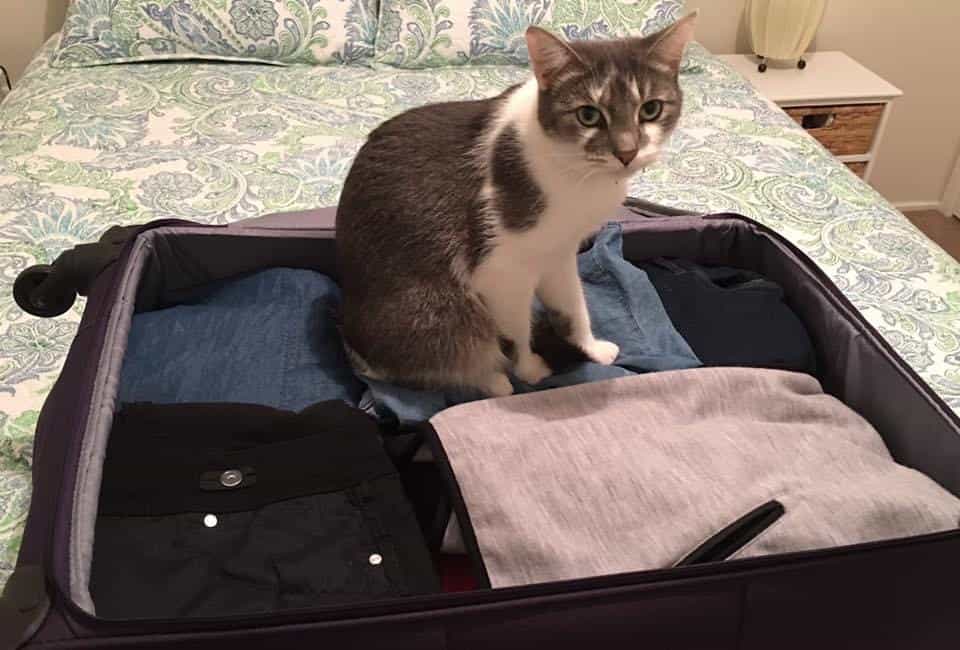
Arrange for a house and/or pet sitter
This can be as simple as asking a neighbour, friend or family member to take care of your home and precious pets.
Make sure they have access to everything they need and are familiar with your pets needs and routines. Don’t forget about any medications they may be on and vet details.
I know we don’t like to think about anything bad happening, but it is possible. I remember one time we travelled overseas and had someone looking after our 17 year old cat. She was a little concerned about what to do if something happened to her. Understandable of course, so a quick call to the vet and we had instructions if necessary. Luckily she was fine and lived another 5 happy years.
You can download these printable travel planning printables which has a handy checklist with everything you need to cover.
Leaving your house secure
Check that everything is locked and that someone is collecting your mail.
Consider setting some timers for your lights if no one is house-sitting for you. This can give the appearance that someone is there even if there’s not.
If you don’t have a house sitter, try to organise someone to do an inside check at least once a week. Ask them to double check you’ve locked everything and check your power. Trust me on this one; I came home to a fridge full of rotten food once after a fuse had tripped and no one had checked.
Let your neighbours know
Even if you’ve got a housesitter it’s a nice courtesy to let a neighbour know that you’ll be away and to expect different vehicles coming to and from your house.
Usually it’s my neighbours looking after my cats and mail when I’m away – it’s nice to know someone else is keeping an eye out for you.
Take care of any bills
Pay everything you can in advance, set up automatic payments and pause any subscriptions for the time you’ll be away.
Lawn and garden care
Water your plants and mow the lawn before you head off. If you’re going to be gone for more than a couple of weeks, you may need to organise someone to do this if you don’t have a housesitter for this.
Make copies of important documentation
Make copies of your itinerary, any important documents and contact details. Leave them with a friend or family member in case of any emergency.
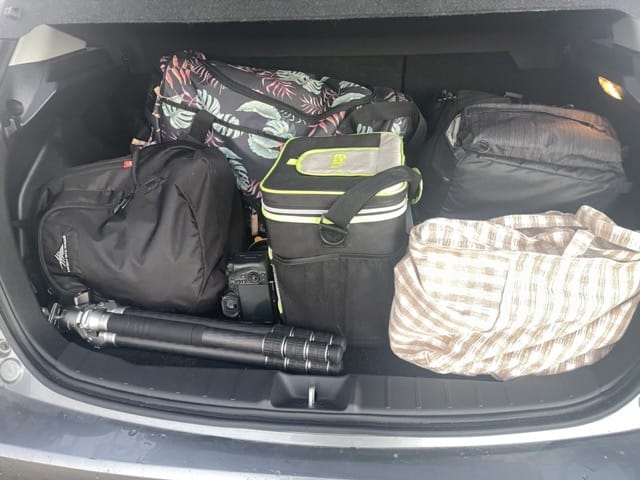
9 – Get Packing
Yay, it’s time to get those bags out and get packing!
The trick to packing for a road trip is the balance between taking too much or too little. A bit like any type of travel really.
The difference here is you tend to have more room (depending on how many are travelling with you) and no weight restrictions like when you’re flying.
This article won’t go over every single item you may need as there is a free downloadable Road Trip Packing List you can grab for this. This list covers everything from clothes, toiletries, electronics, entertainment and more.
Essential ideas to have in the car include:
- Driver’s Licence
- Registration and Insurance
- First Aid Kit
- Roadside Emergency Kit
Everything else you need is covered here in this complete Road Trip Packing List.
TIP – Pack a dark blanket or sheet to leave in the car. This is great to cover up any items you are leaving in your vehicle for long periods or overnight.
Don’t Forget …
How many times have you gotten an hour from home and realise that you forgot to pack something important???
This has happened to me way too many times, so I designed a checklist that I use to pack on every road trip. I’m sharing that list for you FREE, so you don’t make that mistake either!
It’s a super handy list and also includes lots of tips like in this article, so grab it for free here:
10 – Final Touches
Road trips can be absolutely awesome; they do require a lot of planning to set up for a successful one, but some things you just can’t plan for.
They can be draining, both physically and emotionally. Things will go wrong, and there are times you may feel lost but be assured, these things will pass.
Here are a few final things to consider when planning a road trip that will help set you up for success:
Weather
Keep an eye out on the weather forecast for at least a week before you are leaving for your trip.
You will know what the season is by then, and what reasonably to expect, but now is the time to keep your eye out for anything unusual. This can include any bushfires, floods and even heavy snowfalls that can result in road closures and not being able to get to your destinations.

Less severe is just unusual weather patterns. On my first road trip in the middle of summer in Australia, this rookie didn’t take a jacket. After all, it’s normally a minimum of 20 degrees celsius where I was heading. Well not when I went – a few days the maximum was only 8 or 10 degrees! I did manage to buy a jacket, but it wasn’t easy to find!
Don’t make that mistake – I now always carry at least a light jacket as well as a rain jacket which can be great even if it is just windy.
Playlist
As it is a road trip, you will be spending a lot of time on the road, so when planning a road trip, don’t underestimate the importance of music.
This is particularly so if you’re travelling in regional areas where you may not be able to pick up any radio stations.
If you’re travelling with others, have everyone create a playlist of their favourite songs so you can rotate. You may not like everyone’s music, but who knows, you might also discover some new favourites.
Meal Planning
I’m not saying you need to plan out every meal, but eating well without blowing your budget is an important consideration when planning a road trip.
Decide when you are planning to eat out, and when you will be doing your own thing. This will help you when you are doing your supplies shopping, particularly in more rural areas.
Snacks
Now it wouldn’t be a successful road trip without snacks!
This is one of my favourite road trip quotes:
“It doesn’t matter how old you get, buying snacks for a road trip should always look like an unsupervised nine year old was given $100.”
~ Unknown
Not much more needs to be said about that …
Be Spontaneous
Having a plan is essential so you make sure you don’t miss any of your ‘must see’ but sometimes the best things you find are ones you find on the way.
If you see a sign for a detour or lookout that looks interesting, go for it.This is where allowing for extra time in your mapping comes in.
Sometimes these unexpected detours can end up being one of your favourite memories from the trip.
So, get ready to fill up the tank, start throwing everything in your car and get on the road.
But first, here are a few final things to have a successful, stress-free trip:
- Take your camera, and take millions of photos. Ok, not millions, but you’ll only regret the photos that you didn’t take. Make sure you pack all of your necessary gadgets that go along with this. Head to this photography checklist to make sure you’re covered.
- Avoid heading out in rush hour: this will not only save time, but also frustrations, and you don’t need that!
- Keep an eye on the ever-changing speed limits. You don’t want to be wasting any funds on a speeding ticket.
- Download and print your itinerary, accommodation and activity details, and any maps you may need. You may not always have reception to access online.
- Keep an eye on that fuel gauge. Know where your petrol stations are, how far you need to travel and don’t let that fuel get too low.
- If you get tired at all, stop for a short break. Stretch the legs and grab a coffee and snack before you head off re energised again.
- Try to keep a consistent sleep pattern.
- Stay hydrated: buy water in bulk and always have a bottle handy.
- Start your days early to avoid crowds, and enjoy the best part of the day.
If you also love photography, and travel and photography go hand in hand, check out this post. It’s a comprehensive guide to Get Great Landscape Photos When Travelling.
Finally, the most important piece of advice is to take the time to enjoy your adventure. Try to remain present at all times, and enjoy every moment.
So, when are you planning to head off on your next road trip?
I hope these tips help you to plan your own amazing trips and avoid some of the mistakes that I’ve made along the way. You still need to make your own mistakes; they usually make the best stories!
Was there a tip in here that you found useful, or do you have one to add that I’ve missed? I’d love for you to let me know in the comments below.
Happy travels!
That’s it for now – Keep clicking and stay caffeinated
Like this post? PIN it so you can save it for later

Other Posts You Might Like:
- Get Great Landscape Photos When Travelling
- Great Ocean Road Itinerary
- NSW South Coast Road Trip Itinerary
- NSW Snowy Mountains Road Trip
- 10 Day Tasmania Road Trip Itinerary
- Blue Mountains Itinerary
- NSW South Coast Photo Spots: The Top 10 Locations for Great Photos
- Packing For Your Next Photography Trip: How To Decide What To Take
Don’t miss a post – sign up Here if you haven’t already
Note – This post may contain affiliate links This means I may receive a commission, at no extra cost to you, if you make a purchase through a link. Please see my full disclosure for further information.
Unless otherwise stated, all photos are mine and remain my copyright images – Sam Wilson Photography.

